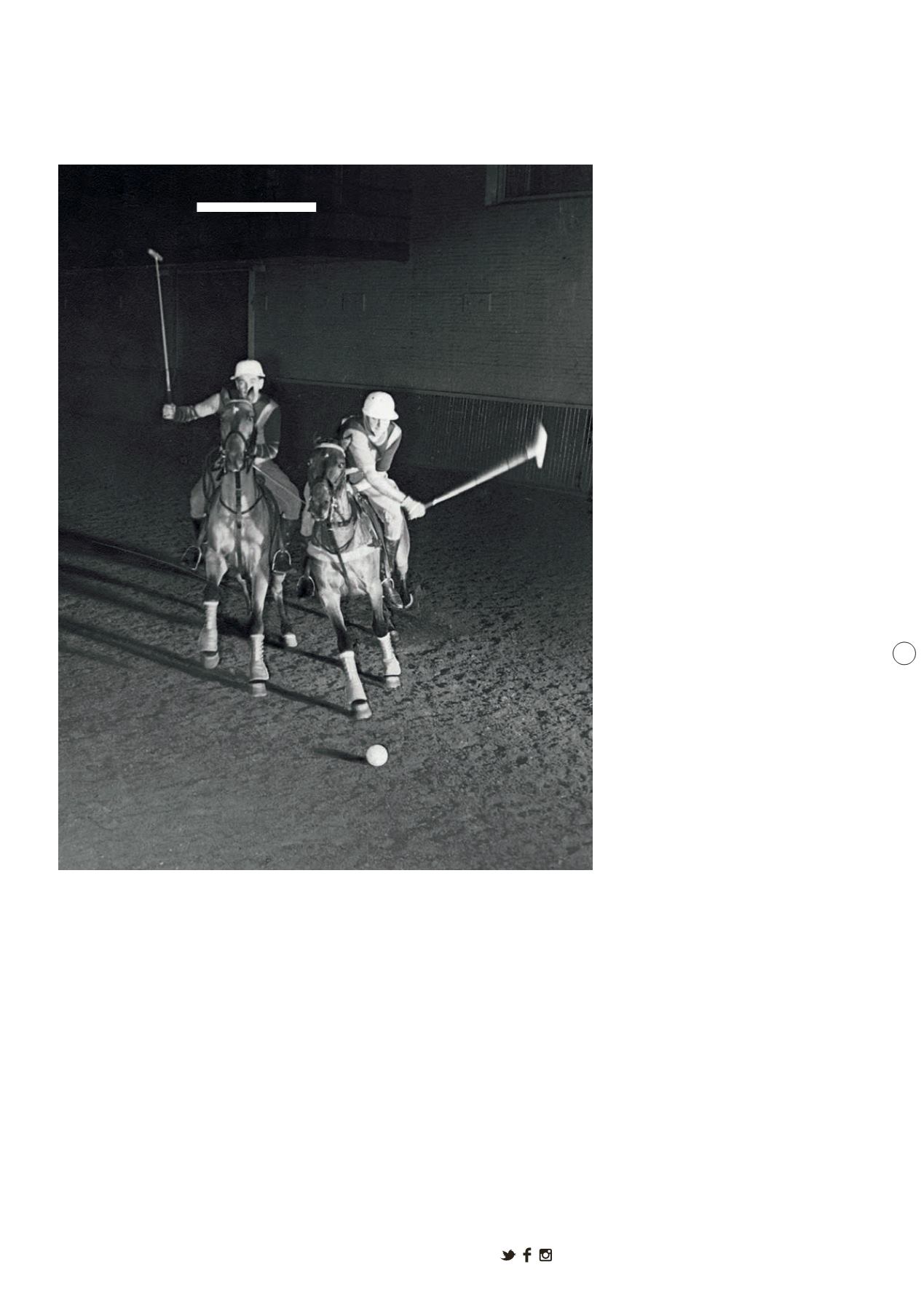
33
follow @hurlinghampolo
A R E N A P O L O A L L OW S E N T R Y-
L E V E L A C C E S S T O T H E G A ME ,
W I T H M I N I M A L I N V E S T ME N T
Championship. However the game managed
to bounce back following the end of the
Second World War in 1946, despite the loss
of the cavalry and government mounts.
In the late 1940s, Michael Phipps (10),
Stewart Iglehart (10) and George Oliver
(9) put together the Orange Bowl Polo
Association in a display of arena polo that
fielded eight, nine and ten-goal players in
front of crowds of thousands in Miami.
The professional games were preceded by
collegiate matches that featured a University
of Miami trio, coached by George Oliver,
that won the intercollegiate championship
in 1948, 1949, 1950 and 1951.
The decline of the indoor arena game has
often been blamed on the loss of the cavalry
and National Guard mounts, but that isn’t
the entire story. A lack of club-owned or
available rental mounts pushed the Indoor
Polo Association to move for divisional
play, and the intensity of the National
Tournament was dismantled.
In 1955, the membership of the Indoor
Polo Association had sunk to 225 while the
United States Polo Association was holding
on to just 408 members. It was decided to
put all polo under one roof, and the two
associations merged.
In his foreword to the 1955 USPA Blue
Book, Devereux Milburn Jr stated that arena
polo ‘affords a wonderful opportunity for the
young beginners. Fewer ponies are required
and, hence the expense for the individual is
greatly reduced.’ He added that ‘in addition,
clubs will find it possible to acquire and
maintain a string of club ponies, a solution
to the problem of young men who do
not have ponies of their own or do not
have stabling facilities.’
Separate arena committees failed to be
established, as arena polo took a back seat
to the field game until professional leagues
emerged in Los Angeles, Dallas and Fort
Worth in the 1980s. A resurgence of polo
at the Chicago Avenue Armory led to
the creation of the United States Open
Arena Polo Championship in 1980, with
Wisconsin’s Joy Farm team (Billy Stevens,
Rick Warren and Jimmy Stevens) beating
Chicago in a 10-9 final.
The Los Angeles Equestrian Center
played high-goal polo to a packed house of
5,000 spectators every weekend. Hollywood
celebrities such as William Devane, Alex
Cord and Pamela Sue Martin took up the
sport and played regularly, while a school
programme kept two additional arenas busy
throughout the week.
Left
: Squadron A playing
arena polo in 1937, with
Walter Phillips on the left


